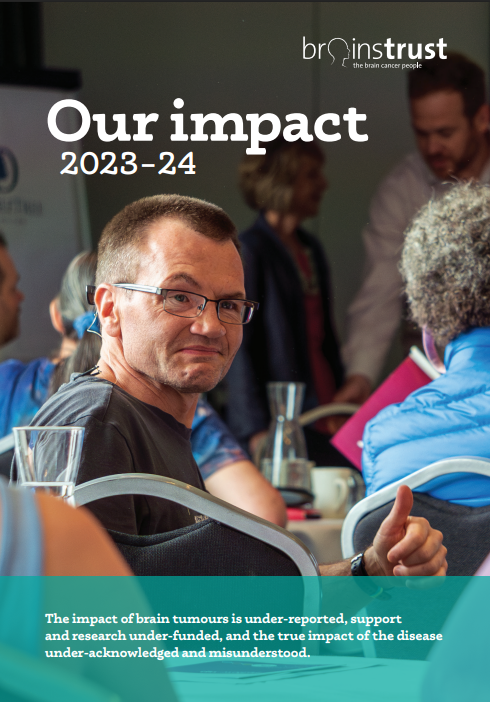Take part in the brainstrust Lottery
Help support our work, and have the chance to win amazing cash prizes!
How does it work?
For every £1 you play each week, you’ll receive a unique 6-digit lottery number.
Every Friday, a winning number is drawn at random. Match your digits to win up to £25,000!
The lottery is a number match game. We generate a random 6-digit winning number sequence. If your digits are in same positions as the digits in the winning number sequence, you win a prize!
For example, if the winning number sequence was 123456, the lottery number 163057 would be a 3-digit winning match; because 3 digits are positioned in the same place in the sequence.
- Pick how many £1 entries you’d like to play each week
- Click to join online by Direct Debit or Debit Card, or alternatively download our postal form
- Fill out your details and click submit, or post your form to our Freepost address
You’ll receive your lottery numbers in the post or by email, and we’ll let you know when you will start playing.
What can you win?
Win up to £25,000 every week plus other great prizes!
- 3 digit match = 5 entries into the next draw
- 4 digit match = £25
- 5 digit match = £1,000
- 6 digit match = £25,000
What are your chances?
Unity offers the best odds of any platform of its kind. Because it’s a number match game, the odds are fixed. This means that no matter which cause you’re supporting, or how big their lottery is, every lottery number has an equal chance of winning a prize.
- 3 digit match = 1 in 69
- 4 digit match = 1 in 823
- 5 digit match = 1 in 18,518
- 6 digit match = 1 in 1,000,000
All players have a 1 in 63 chance of winning ANY prize!
PLAY NOW
YOU MUST BE AGED 18 OR OVER TO PLAY
FAQs
What are the lottery rules?
The lottery rules are available on the Unity website www.unitylottery.co.uk/rules
Is the lottery regulated?
Yes, we operate in compliance with all Gambling Commission (UK regulatory body concerned with lotteries) requirements and the lottery administered by a certified External Lottery Manager. For further information please see our page on www.unitylottery.co.uk
How do I buy lottery tickets?
You can buy tickets by clicking the ‘Play now’ button and setting up a Direct Debit lottery subscription, which is the easiest way to ensure you’re entered into the draw each week, or by cheque/debit card. Alternatively, you can telephone Unity on 0370 050 9240 to request an entry form.
Can I choose my own lottery numbers?
These are chosen randomly and will be your numbers for the duration of your membership of our lottery. When you enter the lottery you will be sent your unique numbers.
Can I have more than one entry?
Yes. Each £1 entry buys you one ‘chance’ of winning in the lottery. You can have a maximum of 20 entries each month per person.
Why am I sent to another website when making a lottery payment online?
When taking payments brainstrust use a secure payments system provided by our External Lottery Manager. This ensures your details are taken in a safe and secure manner when you enter the lottery online.
I’ve signed up to join the brainstrust lottery. What happens now?
Within 10 days of registration you will receive a confirmation letter which contains details of your unique lottery number(s). You will be entered into the draw when you have monies available and you will continue to be entered into the draw as long as you have monies available against your lottery number.
Can I check the winning numbers and how do I claim my prize?
Once the draw has taken place, winners are notified by post, and the winning numbers are published on the Unity website www.unitylottery.co.uk/results . If you are a winner, Unity will send your winning cheque straight to you at your address – there’s no need for you to claim.
How do I cancel my membership?
You can cancel your membership by calling the Unity Lottery Helpline on 0370 050 9240 or using our contact form www.unitylottery.co.uk/contact/ and Unity will advise you further.
Who owns my data?
All the data gathered from members belongs to the charity and you can request access at anytime to the data the charity holds about you. You can choose how you allow your charity to communicate with you. Unity will only ever send you administrative post about your lottery membership – no marketing or anything else.
Lottery Proceeds
A minimum of 50% of the total lottery proceeds are spent on supporting the work carried out by brainstrust, 18.4% on prizes and 31.6% on the running cost and administration of the lottery.
BeGambleAware
If you are looking for help, advice or support in relation to gambling, please visit
www.begambleaware.org
or call the helpline on 0808 8020 133.









